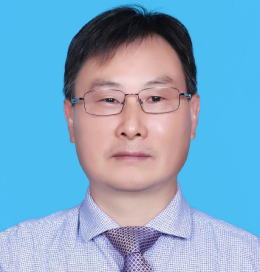
Dr. Youbin Wang is a plastic surgeon and a professor of Beijing Youyi Hospital Associated with Capital Medical University. He has focused on the field of keloid more than twenty years. He has developed many surgical methods in keloid treatment and raised a new concept of “keloid subepidermal microvascular network flap” based on clinical observation and experiment study. His current study activities are to explore keloid development mechanism in the view of tumor immune genetics. He has published more than fifty SCI papers and half of them are about keloid.
Abstract submitted for the 5th International Keloid Symposium
Facial keloid treatment with keloid subepidermal vascular network flap (KSVNFs): A long-term follow-up study
Wang Youbin, Dong Guoxuan
Plastic and Aesthetic Surgery Department of Beijing Youyi Hospital Associated with Capital Medical University
Objective
To investigate the early and long-term efficacy of a modified “keloid core excision method” preserving the keloid subepidermal vascular network flap (KSVNFs) combined with postoperative electron beam radiotherapy in patients with multiple facial keloids.
Methods
A retrospective analysis included 94 patients (846 lesions) treated between January 2017 and January 2020. The surgical procedure involved a modified keloid core excision technique preserving KSVNFs. Single- or double-pedicle KSVNFs flaps with an aspect ratio ≈1 were designed according to lesion size. Keloid core tissue was removed through layered dissection while preserving the integrity of the subcutaneous vascular network. Wounds were closed using vertical mattress sutures combined with interrupted sutures. Adjuvant radiotherapy (6 MeV electron beam, 9 Gy/fraction) was delivered in two fractions (24 hours postoperatively and postoperative day 7). Early outcomes (postoperative day 9) focused on flap necrosis rate, while long-term follow-up (until March 2025) evaluated recurrence rates and patient satisfaction (assessed via a Likert 5-point scale, with 5 indicating optimal satisfaction).
Results
Early evaluation (postoperative day 9) revealed a flap necrosis rate of 2.5% (21/846), with 3 cases (3.2%) of delayed wound healing and superficial infection, all resolved by local debridement. Long-term follow-up (median 90.6 months, range 60-96 months) demonstrated an 84% cure rate (79/94). Complications included localized hyperpigmentation in 6 patients (6.4%) and mild atrophic scarring in 4 patients (4.3%). Patient satisfaction assessment showed 41 cases (43.6%) “very satisfied,” 44 cases (46.8%) “satisfied,” and 9 cases (9.6%) “dissatisfied,” yielding an overall satisfaction rate of 90.4% with a mean score of 4.4±0.6 points.
Conclusion
The KSVNFs preserving technique combined with electron beam radiotherapy demonstrates superior tissue preservation (flap necrosis rate: 2.5%), durable efficacy (16% recurrence vs. literature-reported 25–40% for conventional methods), and high patient satisfaction (90.4%). This combined protocol represents an optimal treatment strategy for multiple facial keloids, offering significant clinical value in aesthetic restoration.


